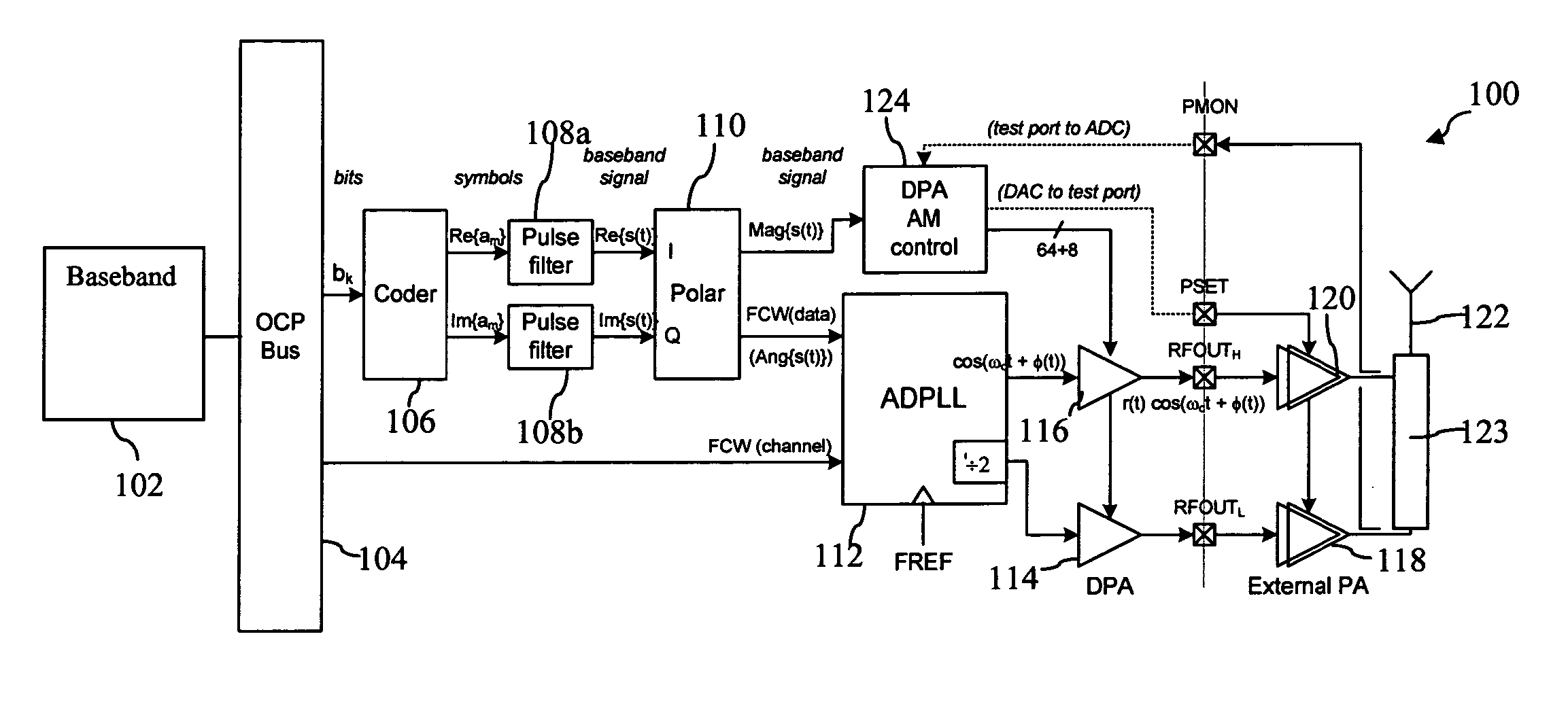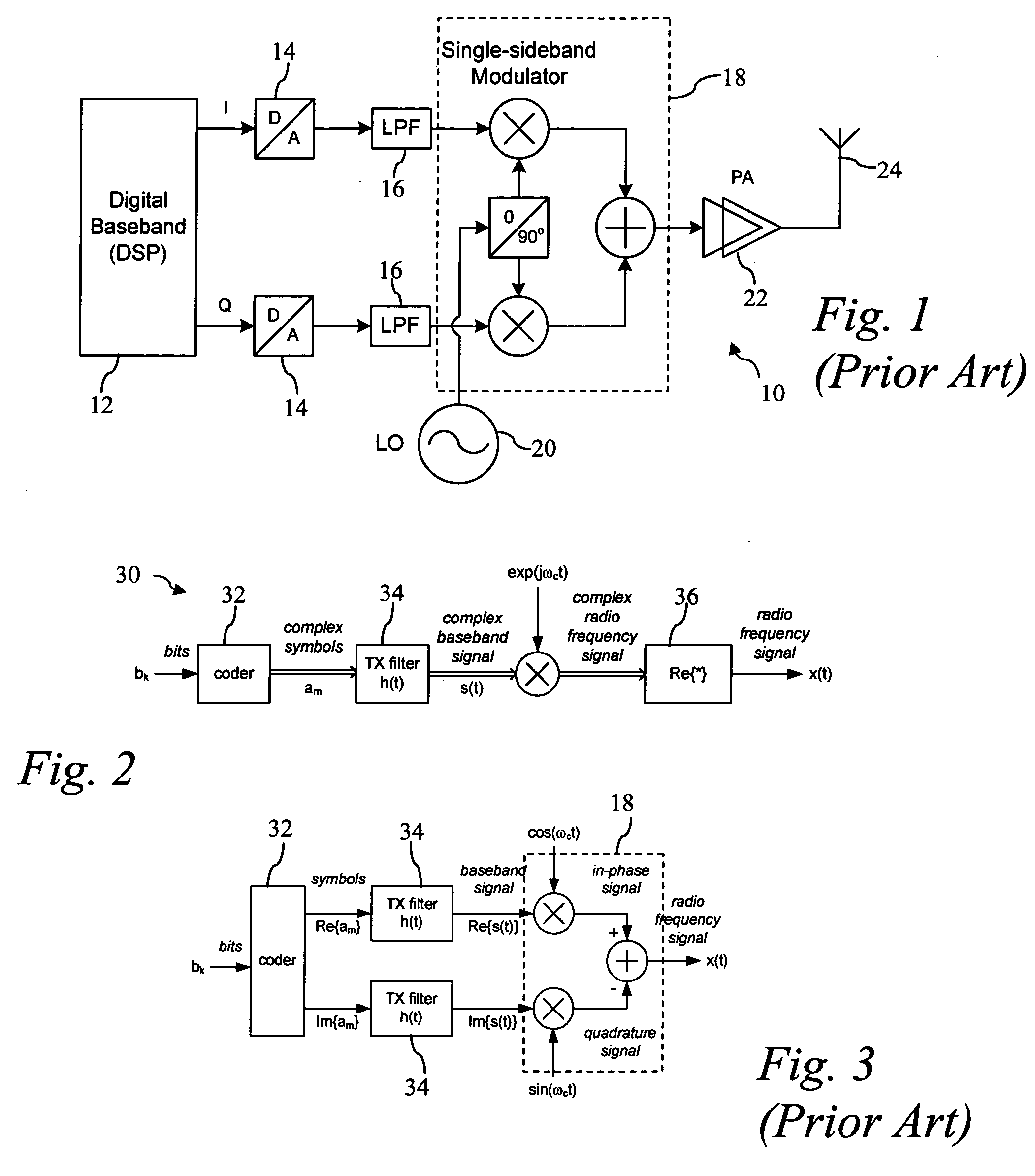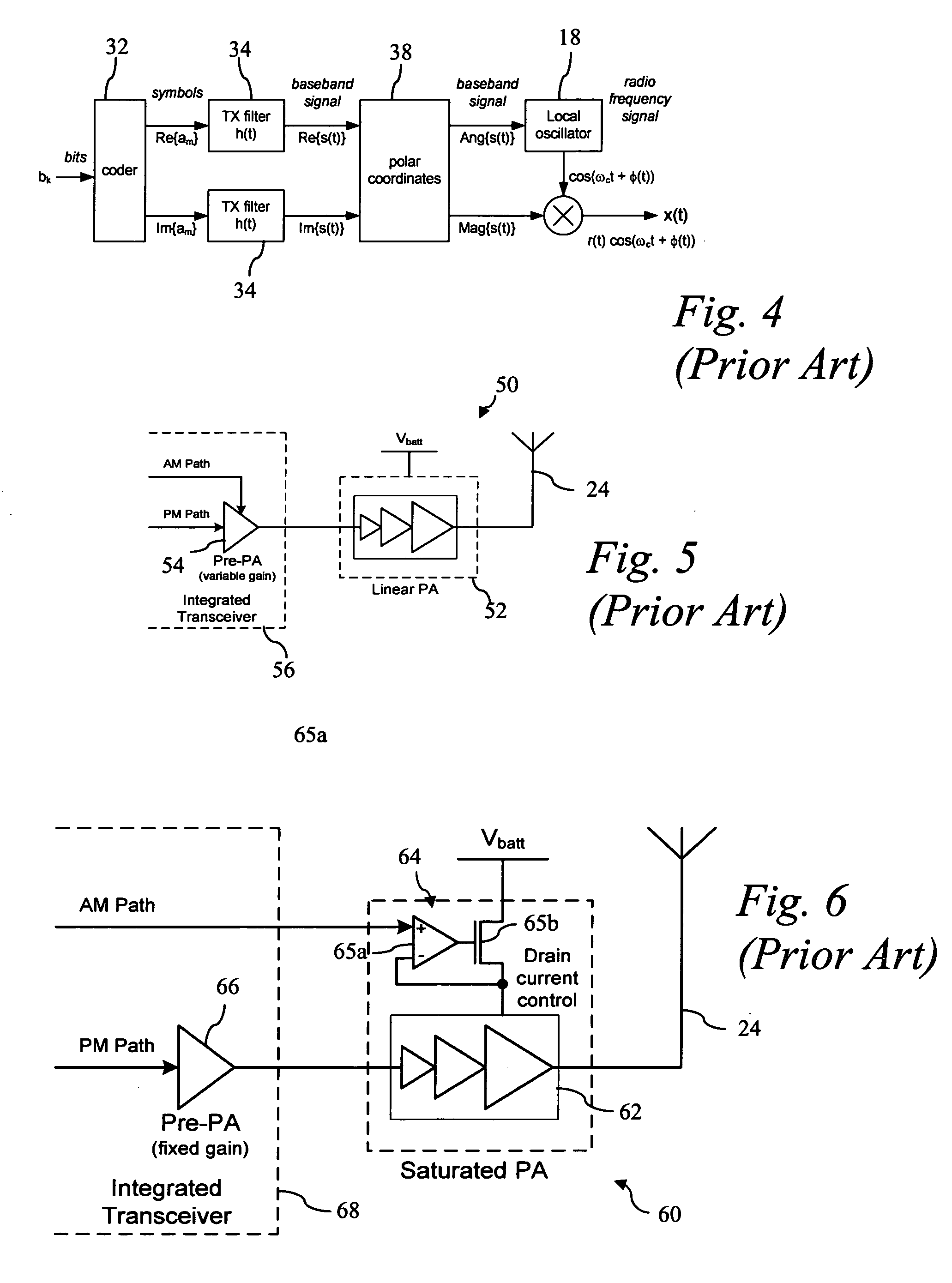Digital amplitude modulation
- Summary
- Abstract
- Description
- Claims
- Application Information
AI Technical Summary
Benefits of technology
Problems solved by technology
Method used
Image
Examples
first embodiment
[0042]FIG. 10 illustrates a DPA 128, which could be used for DPA 114 or 116. The 64+8 bits output from AM control circuit 124 are coupled to the gates of respective n-channel CMOS transistors 130. Each transistor 130 has source / drains coupled in series with a respective n-channel transistor 132 between voltage rail 134 and ground. N-channel transistors 132 have gates coupled to the output of the ADPLL 112. Voltage rail 134 is coupled to matching network 136, for converting the switch state (its resistance or drain current) to a sinusoid. Resistor RL represents the input impedance of the external power amplifier.
[0043] In operation, the main attribute of the DPA 128 of FIG. 10 is low noise. The thermometer code output of AM control 124 determines how many transistors 130 are enabled. The RF amplitude is digitally controlled by regulating the number of active switches in accordance with the desired instantaneous amplitude.
second embodiment
[0044]FIG. 11 illustrates a DPA 140, where the 64+8 bits output from the AM control circuit 124 drive one input of respective AND gates 142. The other input of each AND gate 142 is driven by the output of the ADPLL 112. Each AND gate 142 drives the gate of an n-channel transistor 144, where each n-channel transistor has source / drains coupled between a matching network input, voltage rail 146 and ground. A matching network 148 is coupled between the voltage rail, transistor switches output 146 and the external power amplifier.
[0045] In operation, the DPA 140 improves on the carrier leakage of DPA 128 of FIG. 10. The AND gates 142 may be implemented as a complementary pass gate with a pull-down n-channel transistor. Similar to FIG. 10, the output of AM control circuit 124 determines the number of transistors 144 that are dynamically enabled.
[0046]FIG. 12 illustrates a block diagram of a preferred embodiment for the AM control circuit 124. The AM control circuit receives the clock, CK...
PUM
 Login to View More
Login to View More Abstract
Description
Claims
Application Information
 Login to View More
Login to View More - R&D
- Intellectual Property
- Life Sciences
- Materials
- Tech Scout
- Unparalleled Data Quality
- Higher Quality Content
- 60% Fewer Hallucinations
Browse by: Latest US Patents, China's latest patents, Technical Efficacy Thesaurus, Application Domain, Technology Topic, Popular Technical Reports.
© 2025 PatSnap. All rights reserved.Legal|Privacy policy|Modern Slavery Act Transparency Statement|Sitemap|About US| Contact US: help@patsnap.com



